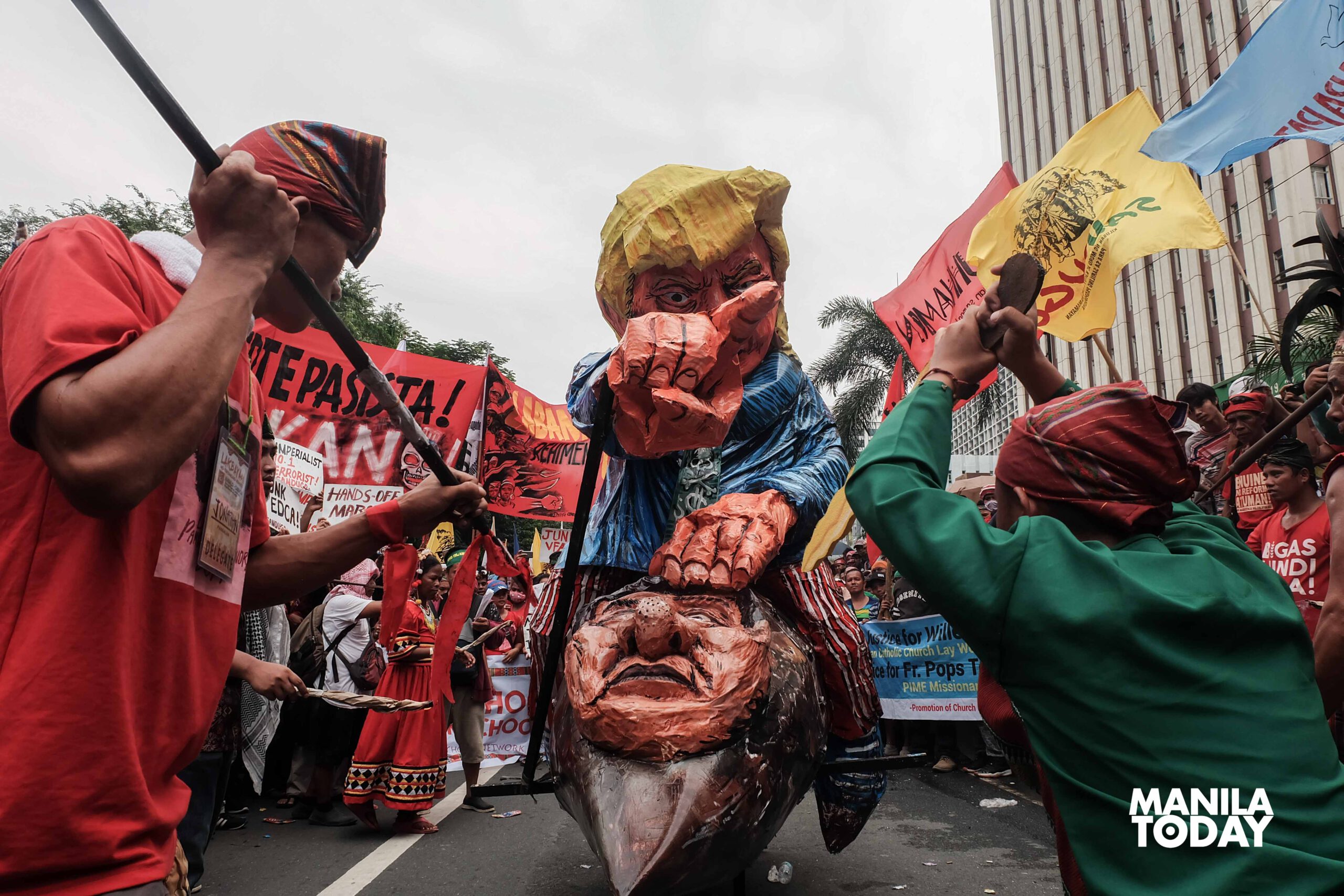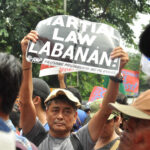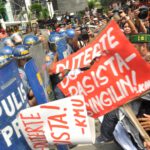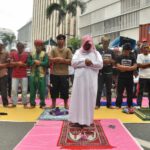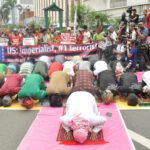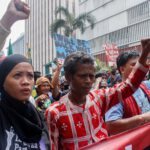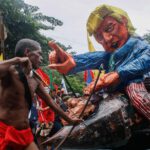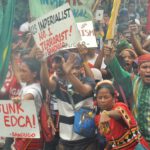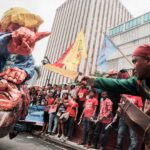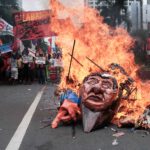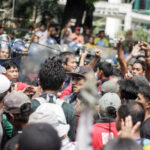Moro and indigenous peoples who are part of the Lakbayan ng Pambansang Minorya 2017 and progressive groups led by Bagong Alyansang Makabayan (Bayan) trooped to the United States (US) embassy in the morning of September 15 to commemorate the 26th year of the rejection of US bases in the Philippines. Activists claimed that that victory and the sovereignty of the country has been trampled and made a mockery by the US and also the government leaders of the Philippines through time.
Protesters also denounced Duterte’s Martial Law in Mindanao and his goosestepping of the US war on terror in the shelling of the Islamic City of Marawi, despite his pronouncements of correcting the historical injustices against the Moro people and his anti-US rhetoric.
On September 16, 1991, the Philippine Senate voted to reject the 1947 Philippines and US Military Bases Agreement. The agreement, signed eight months after the Philippines ‘became independent of the United States’, provided home and work facilities to more than 7,000 Americans and was a major refueling and repair station for the United States Seventh Fleet and was the symbol of continued American occupation of the country in almost a whole century. Then-president Corazon Aquino would have wanted to extend the agreement with a new 10-year treaty her administration worked out with the government in Washington, but was five votes shy to get approval.
This 1947 agreement had allowed the United States to extend the stay of its bases in the country until 2046 (an amendment in 1966 lowered the 99-year stay from 1947 to 25 years from 1966) if it was not for the clamor of the people for true independence. The historic event in the fight for the nation’s sovereignty was truly a triumph of the people’s movement and the people, who on the day of the Senate vote, launched a protest of tens of thousands in front of the old Senate building.
Today, the country is right back in the throes of US political and military control. Not long after the US bases rejection, the administration of Joseph Estrada approved the Visiting Forces Agreement in 1998 that allowed US forces to come back to the Philippines and stay for limited periods of time yearly and the Balikatan military exercises since 1999 between the US and the Philippines, known to be conducted in areas of US investments interests or ‘hotbeds of communism’. The administration of Benigno Aquino III approved the Enhanced Defense Cooperation Agreement (EDCA) in 2014, said to be more invasive than the previous Military Bases Agreement, and the Philippine Supreme Court upheld it as constitutional. The current Rodrigo Duterte administration allotted P 124 million as EDCA counterpart fund, which only meant that the people’s coffers would share the costs of US soldiers operations in the Philippines.
The struggle for genuine national sovereignty continues.


























